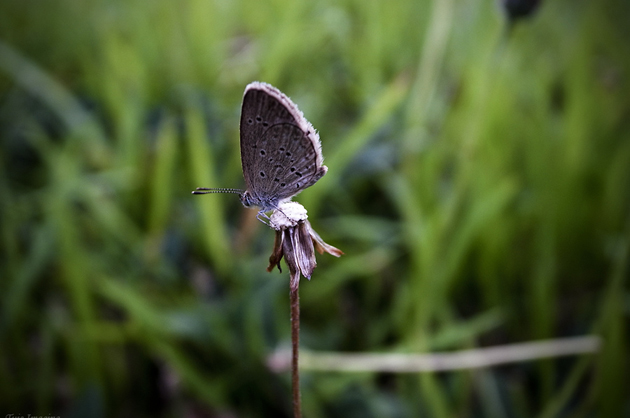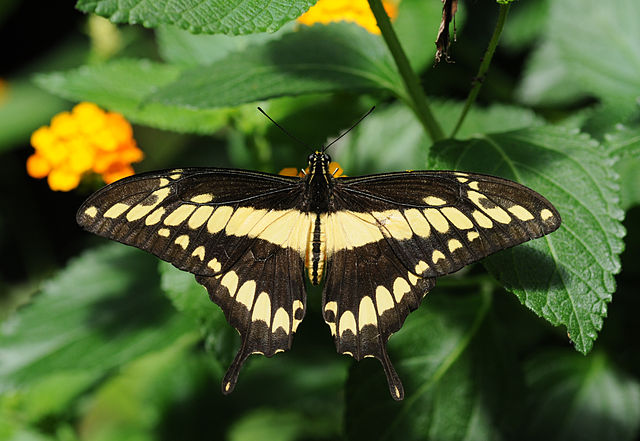
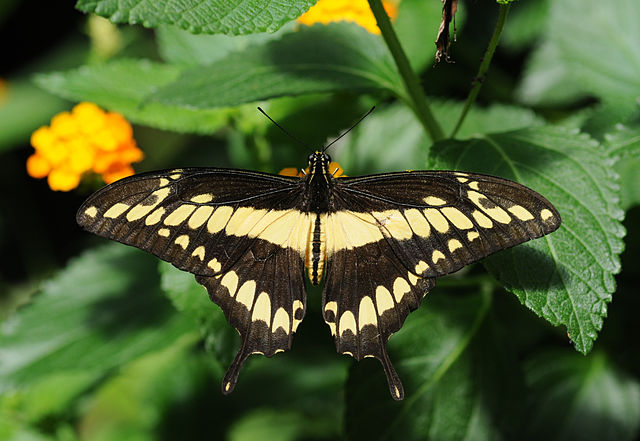
Butterflies from the southern US that used to be rare in the northeast are now appearing there on a regular basis. The trend correlates to a warming climate report the authors of a paper in Nature Climate Change.
Subtropical and warm-climate butterflies—including the giant swallowtail (photo above) and the zabulon skipper (photo below)—showed the sharpest population shift to the north. As recently as the late 1980s these species were rare or absent in Massachusetts.
At the same time southern butterflies are moving north, more than 75 percent of northern species—with a range centered north of Boston—are rapidly declining in Massachusetts now. Disappearing fastest are the species that overwinter as eggs or larvae. Which suggests that changes in the winter climate (like more drought or less snow cover) may be harming nonadult butterflies.
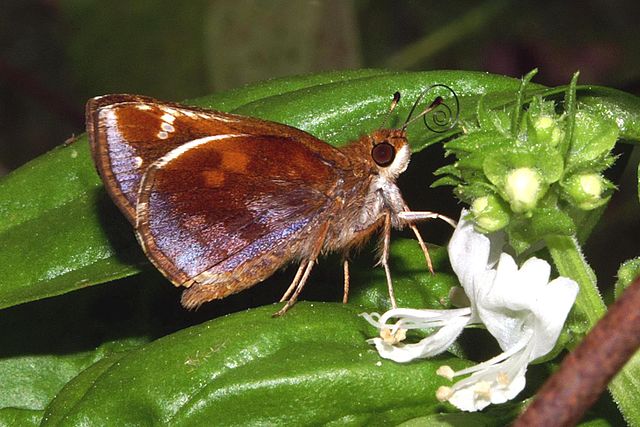
“For most butterfly species, climate change seems to be a stronger change-agent than habitat loss,” lead author Greg Breed tells the Harvard Gazette. “Protecting habitat remains a key management strategy, and that may help some butterfly species. However for many others habitat protection will not mitigate the impacts of warming.”
Breed points to the frosted elfin (photo above), a species that receives formal habitat protection from Massachusetts, and has increased 1,000 percent there since 1992. Meanwhile common summer butterflies that have no protection in Massachusetts (atlantis and aphrodite fritillaries) have declined by nearly 90 percent. From the paper:
Conservation agencies should not use our results to infer that all southern species are safe nor that all northern species are doomed to extinction. However, understanding mechanisms of population decline could improve management practices and limit potentially costly efforts that will have little influence on species conservation.
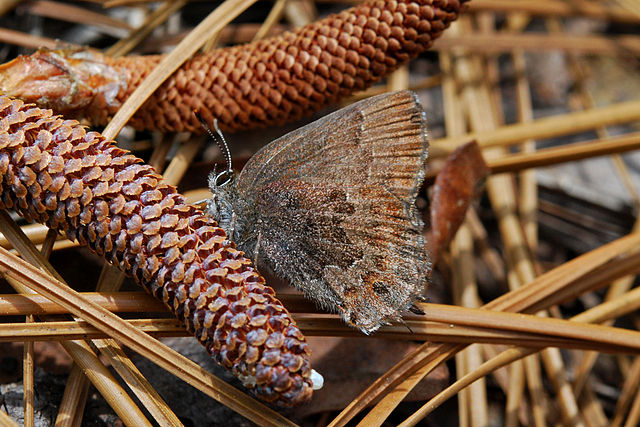
What’s extra cool about this research is that the data come from citizen scientists at the Massachusetts Butterfly Club. Over the last 19 years members have logged butterfly species and numbers on some 20,000 expeditions through Massachusetts. Their records fill a crucial gap in the scientific record.
Butterflies are turning out to be the canaries in the coal mine of climate warming:
- This study in Biology Letters found that Australia’s common brown butterfly emerged from their pupae on average 1.6 days earlier each decade between 1941 and 2005, when average air temperature increased by 0.14°C per decade.
- Butterflies and other species living in the mountains suffer from the “escalator effect“… i.e., when there’s no higher “latitude” for them to shift to beyond the summit.
- MoJo’s Kiera Butler wrote here about the Karner blue butterfly and the problem of what to do when conditions force them northward but they can’t make it past urban roadblocks.
- I reported here about populations of Apollo butterflies in the Rocky Mountains so fragmented by the escalator effect that they could be wiped out by one particularly bad weather event.
- Check out this Google Scholar search page for just how many papers are being published on butterflies feeling the heat.
The Nature Climate Change paper:
- Greg A. Breed, Sharon Stichter & Elizabeth E. Crone. Climate-driven changes in northeastern US butterfly communities. Nature Climate Change (2013). DOI:10.1038/nclimate1663
